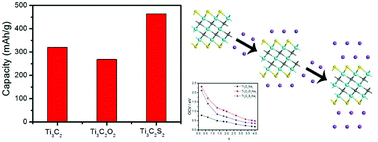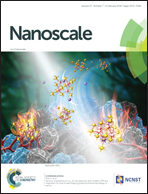The S-functionalized Ti3C2 Mxene as a high capacity electrode material for Na-ion batteries: a DFT study†
Abstract
MXenes are attracting much attention as electrode materials due to their excellent energy storage properties and electrical conductivity, and the energy storage capacities were found to strongly depend on the surface terminal groups. Here S-functionalized Ti3C2 as a representative MXene material is designed. Our density functional theory (DFT) calculations are performed to investigate the geometric and electronic properties, dynamic stability, and Na storage capability of Ti3C2, Ti3C2O2 and Ti3C2S2 systems. The Ti3C2S2 monolayer is proved to show metallic behavior and has a stable structure, and meanwhile it also exhibits a low diffusion barrier and high storage capacity (up to Ti3C2S2Na4 stoichiometry) for Na ion batteries (NIBs). The superior properties such as good electrical conductivity, fast charge–discharge rates, low open circuit voltage (OCV), and high theoretical Na storage capacity, make the Ti3C2S2 monolayer a promising anode material for NIBs compared to the Ti3C2O2 monolayer. More importantly, similar to the Ti3C2S2 monolayer, other MXenes with a high charge density difference and suitable lattice constant can be formed, and thus the energy storage properties are worth further study. This finding will be useful to the design of anode materials for NIBs.



 Please wait while we load your content...
Please wait while we load your content...